 | Mammillaria Society Forum
Discussion Forum about Mammillaria, Coryphantha and Escobaria
|
|
| | Photos from my Mexico trip - first of many parts! |  |
| | | Author | Message |
|---|
Chris43
Moderator


Number of posts : 1872
Age : 81
Location : Chinnor, UK
Registration date : 2008-07-16
 |  Subject: Photos from my Mexico trip - first of many parts! Subject: Photos from my Mexico trip - first of many parts!  Tue May 18, 2010 2:48 pm Tue May 18, 2010 2:48 pm | |
| I promised that I would post some photos from my recent trip to Mexico. There are a great many as I took over 2000 photos. This will take me some weeks to process, so it will be a long running thread or threads. Early on the 15th April, we left the hotel into which we had fallen after (for me) 17 hours of travel to Mexico city and a tedious 3 hr drive north. We headed up towards San Miguel Allende, but turned west before reaching that city passing the dam, and then took another left turn down a dirt road towards the village of Dolores. The spot we were looking for was quite easy to find, and we looked over the chalky soil to find 6 or 7 different cactus species. The Mammillarias there were M. zephyranthoides and M. heyderi ssp. gummifera, though there were many plants of Ferocactus latispinus, Coryphantha sp., Stenocactus phyllacanthus and Cylindropuntia imbricata. Here are a few of the photos from that site: 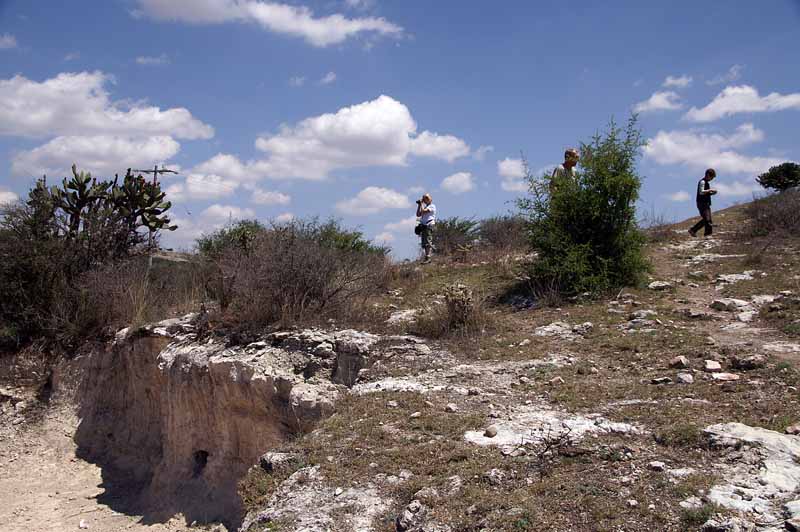 This is one view of the site with a couple of the group searching. 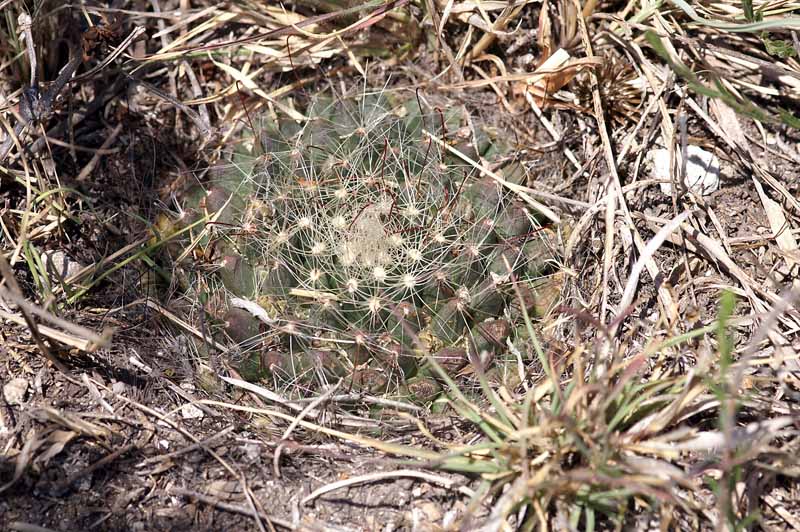 Mammillaria zephyranthoides 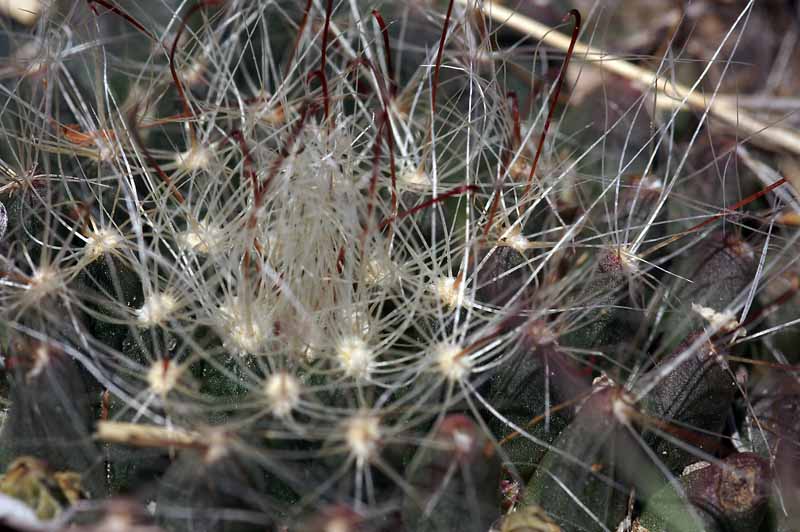 A close up of the plant in the previous photo. 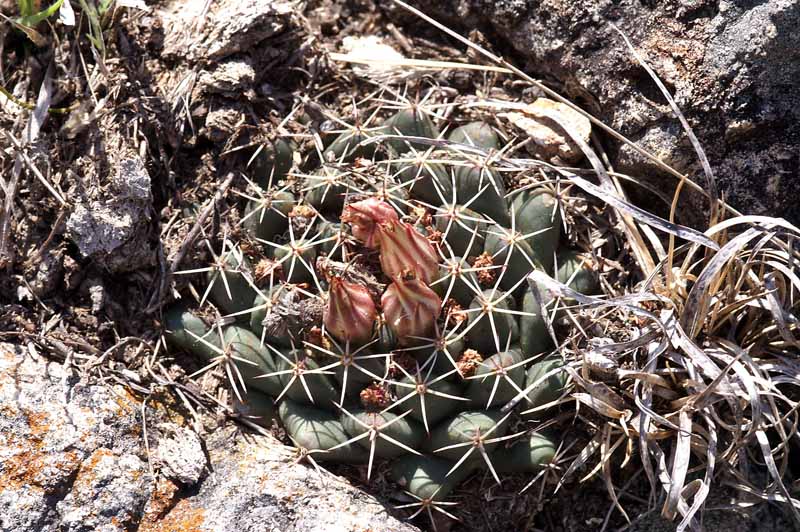 Mammillaria heyderi ssp. gummifera 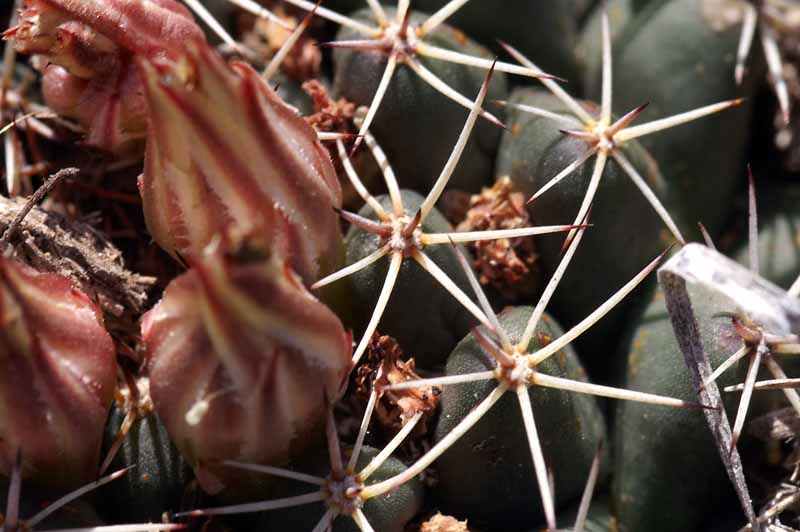 A close up of the plant in the previous photo 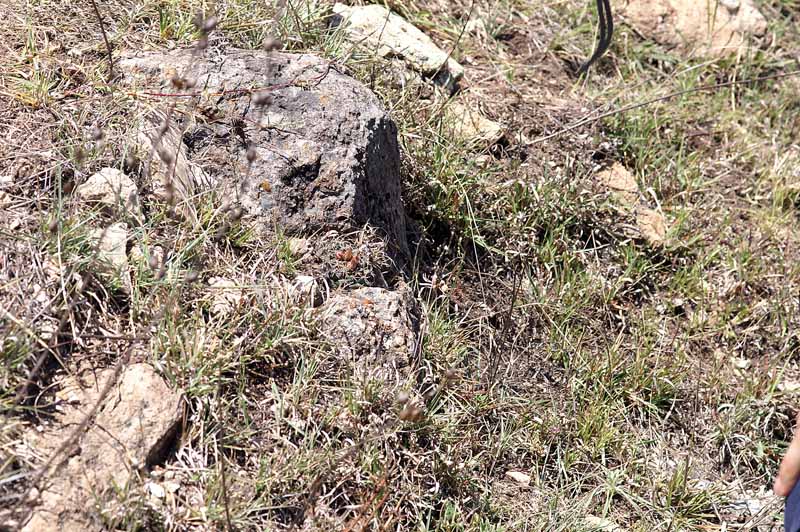 A view of where one of the Mammillaria heydrei ssp. gummifera plants can be seen. We also searched the canyon down which the now small steam from the dam runs, and there was a red spined Mammillaria way up on the side of the canyon. It was, I thought, either a form of M. rhodantha or of M. polythele. The photos had to be taken from a long distance and even with a 250mm lens, I can't be sure which it is. Later in the day, after a couple of explorations which yielded nice plants but no Mamms, we were about 25kms from Queretaro where we were to stay the night, and searched an area which was full of Coryphanthas (ottonis and cornifera), but also M. heyderi ssp meiacantha (perhaps!!) and on a rock nearby a single plant of what I believe to be M. rettigiana. 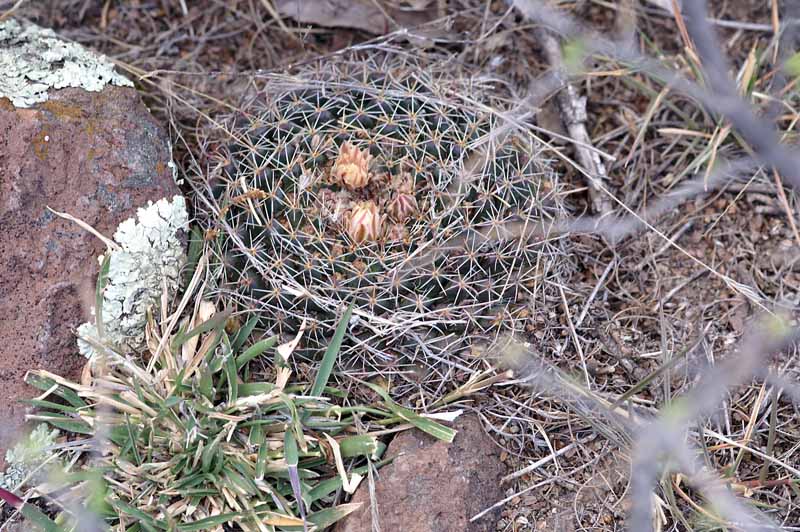 This is the M. heyderi which could be ssp. meiacantha (or it could be ssp. gummifera again). 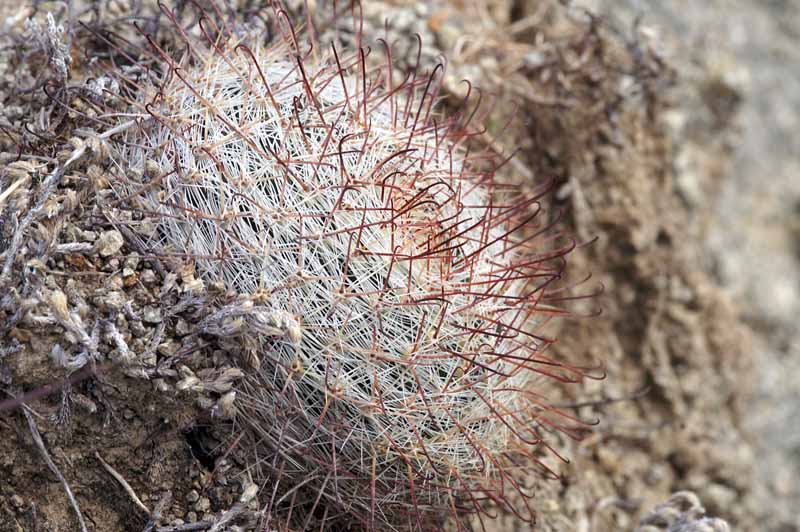 The plant which I think is M. rettigiana - it was the right location for it, and it seems to match the description, other than on some areoles it looks as though several of the central spines are hooked. 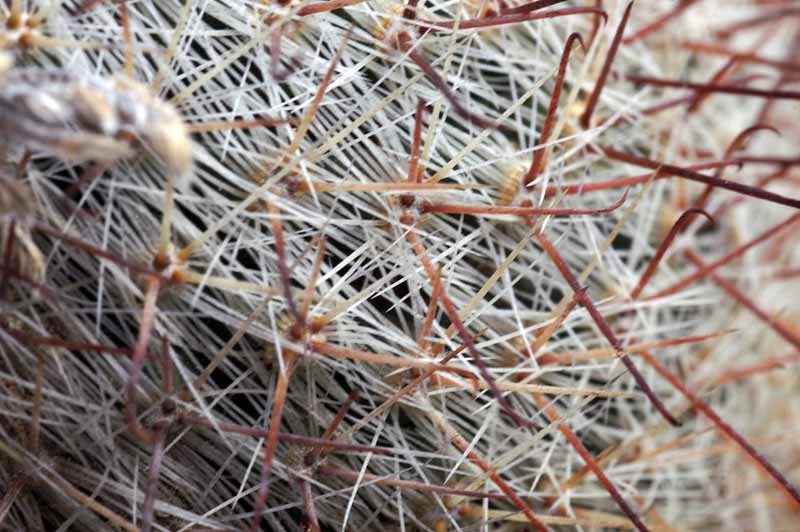 Closer in 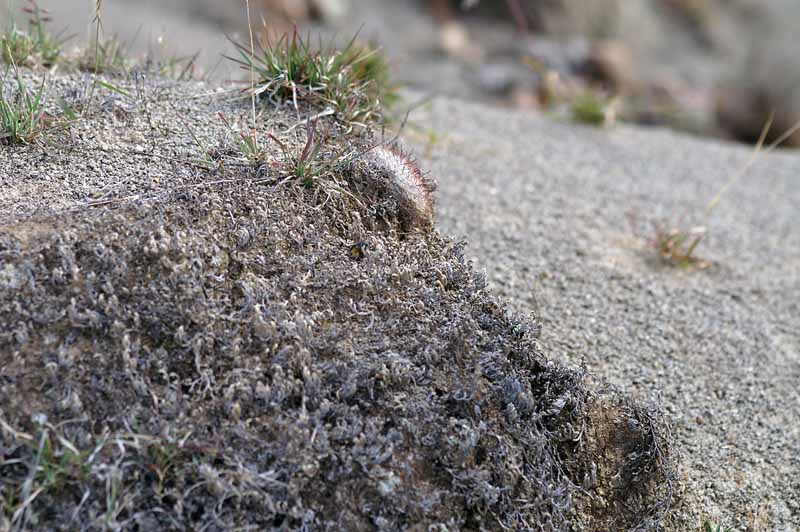 Growing on the rock. If anyone has a better idea of what these plants are, I'd be delighted to know, as I don't claim to be infallible about identification, as Ento in anther thread has realised! I'll try to post some more tomorrow, hopefully.
_________________
Chris43, moderator
| |
|   | | Chris43
Moderator


Number of posts : 1872
Age : 81
Location : Chinnor, UK
Registration date : 2008-07-16
 |  Subject: Day 2 Subject: Day 2  Wed May 19, 2010 11:54 am Wed May 19, 2010 11:54 am | |
| Leaving Queretaro, we took the MX110 and after perhaps 10km, we were in forested hills, and found a place to stop where the tress were fewer. Here we found these: 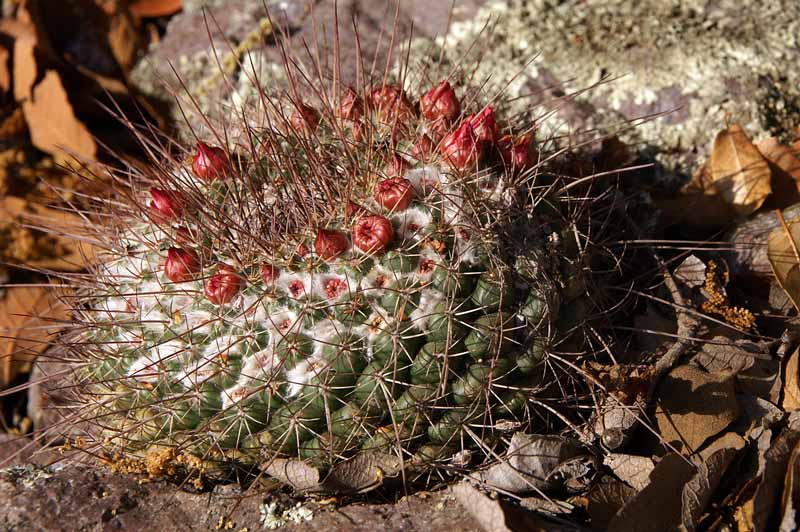 Mammillaria pettersonii 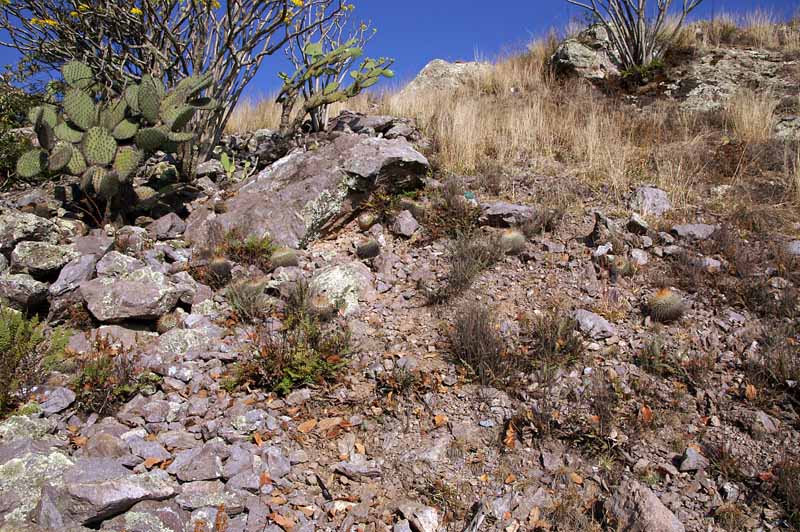 On the steep shaly hillside 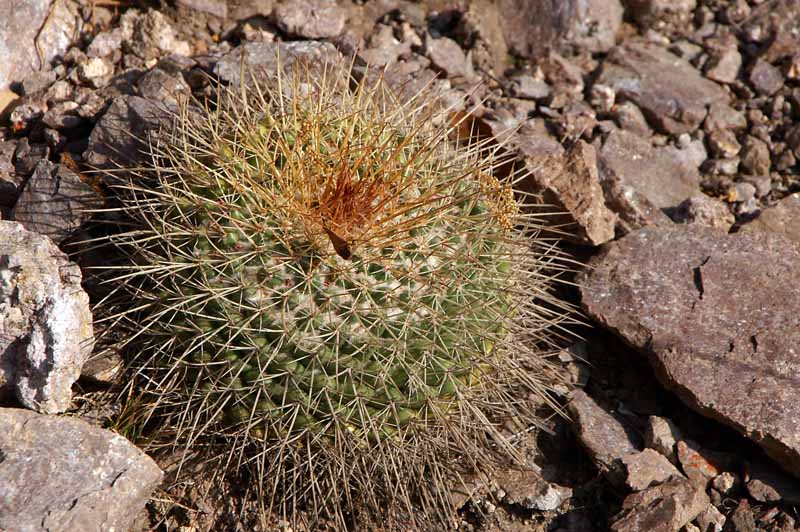 Mammillaria pettersonii 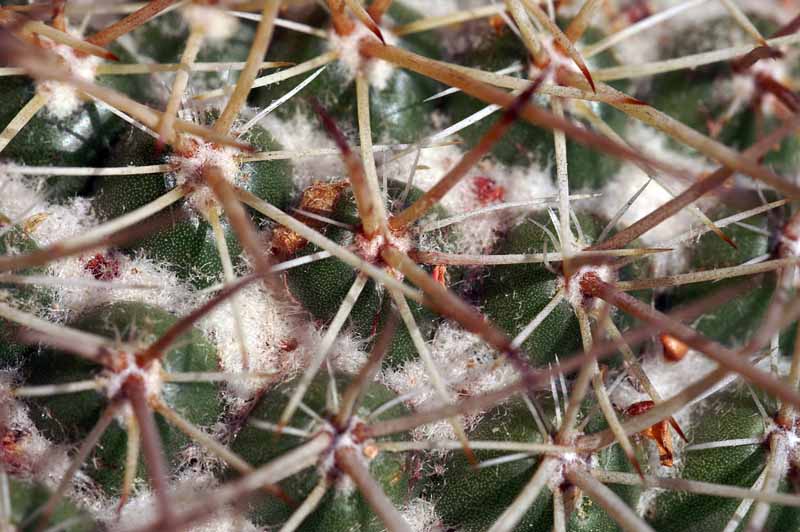 Mammillaria pettersonii 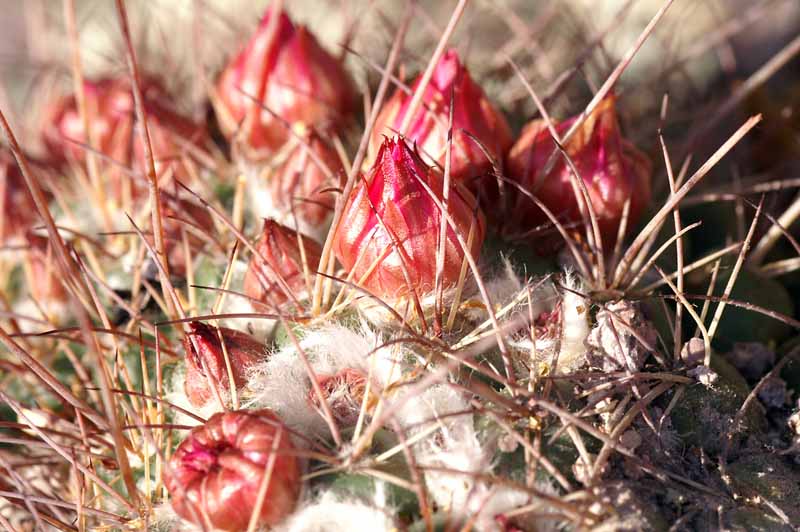 Mammillaria pettersonii 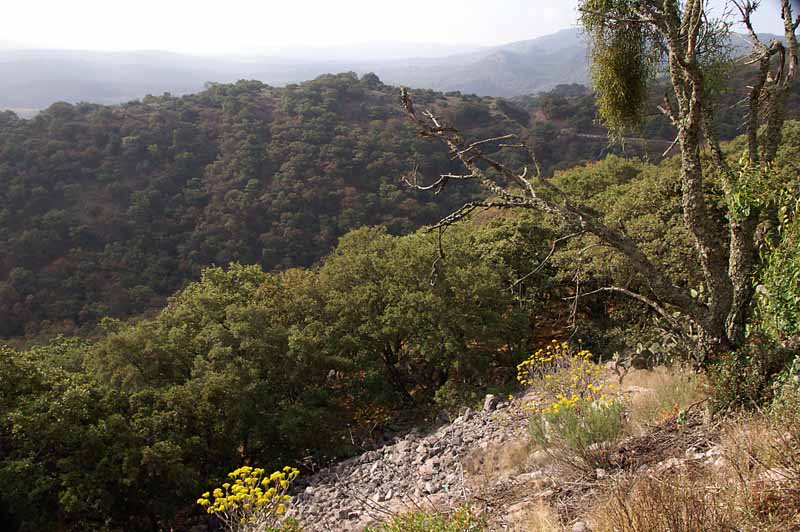 View across the hills Towards San Felipe, we took a dirt road which lead through San Andres del Cubo, and stopped to hike towatds the hills. Here we found: 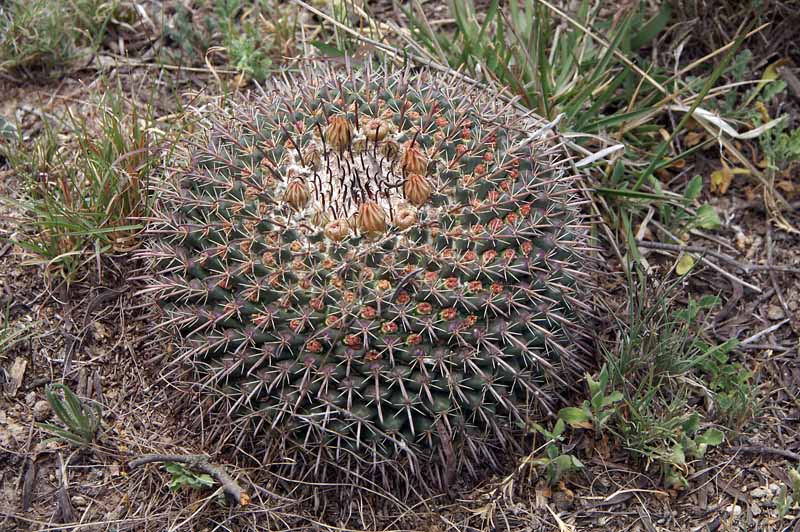 Mammillaria uncinata 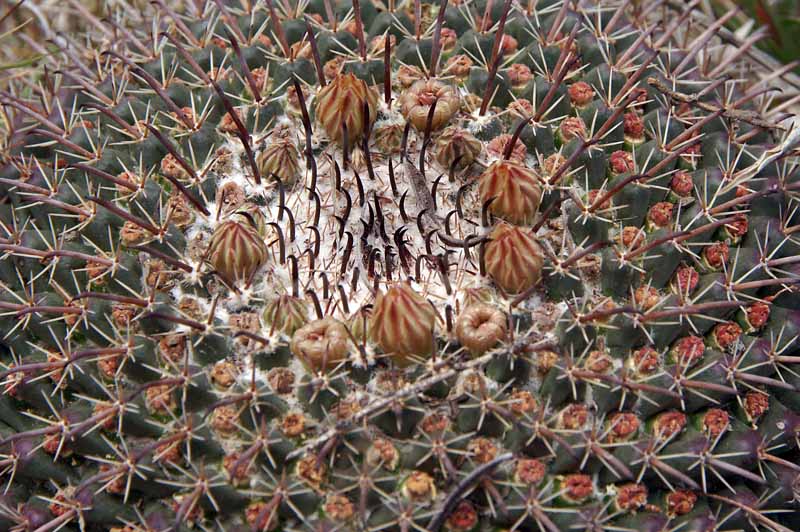 Mammillaria uncinata  One of the many plants nestling under a bush. 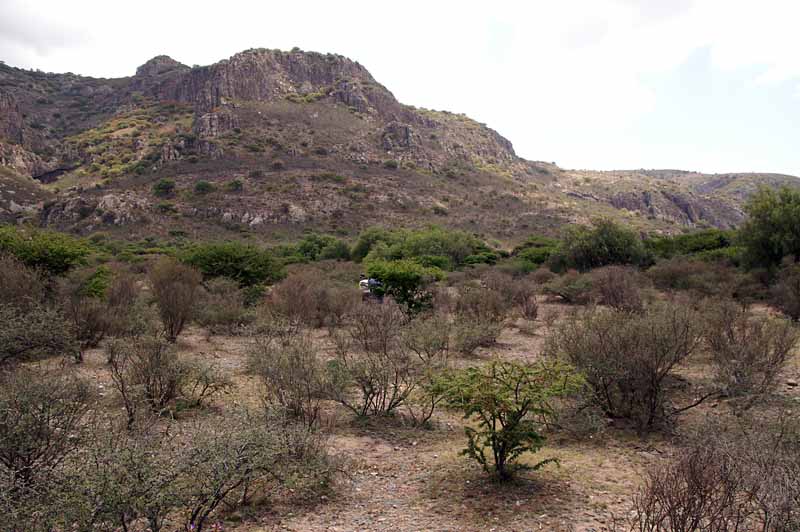 A view of the area towards the hills There were also a form of Mammillaria heyderi, perhaps still gummifera, though with different flowers and spination from those found earlier.  Mammillaria heyderi form 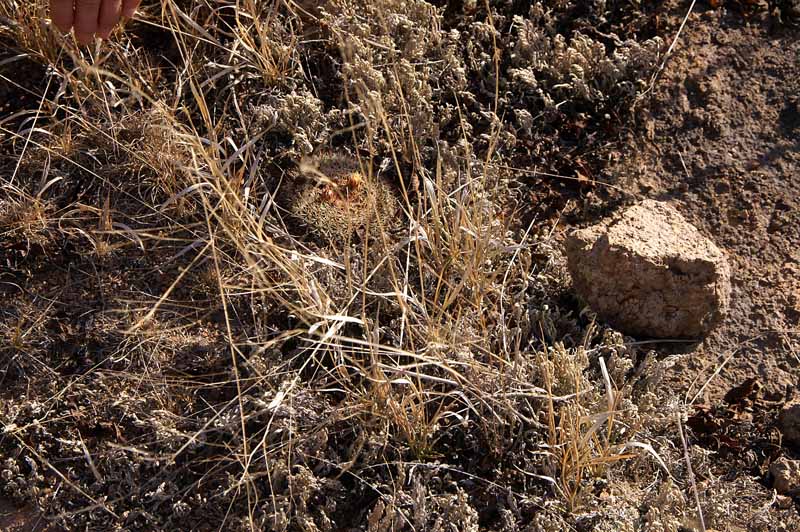 Mammillaria heyderi form A couple of km on from El Ocote, we stopped amid rock topped hills. Here we found three Mammillarias: 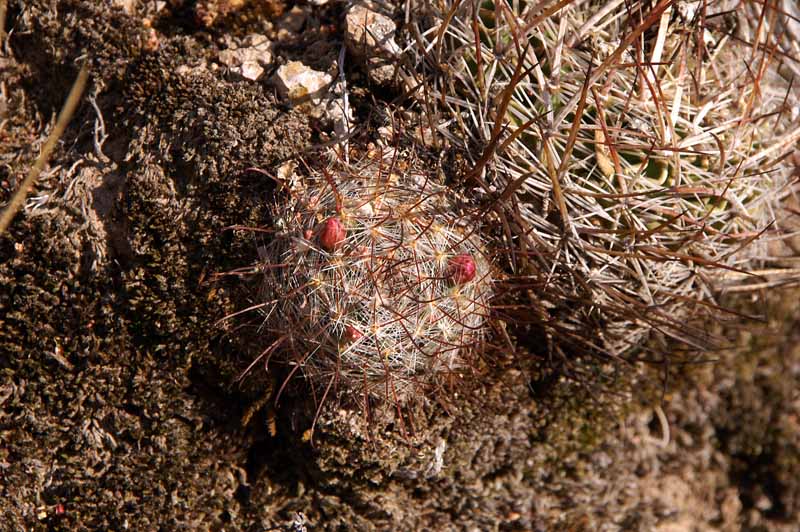 Mammillaria jaliscana aff. beside a Stenocactus sp. 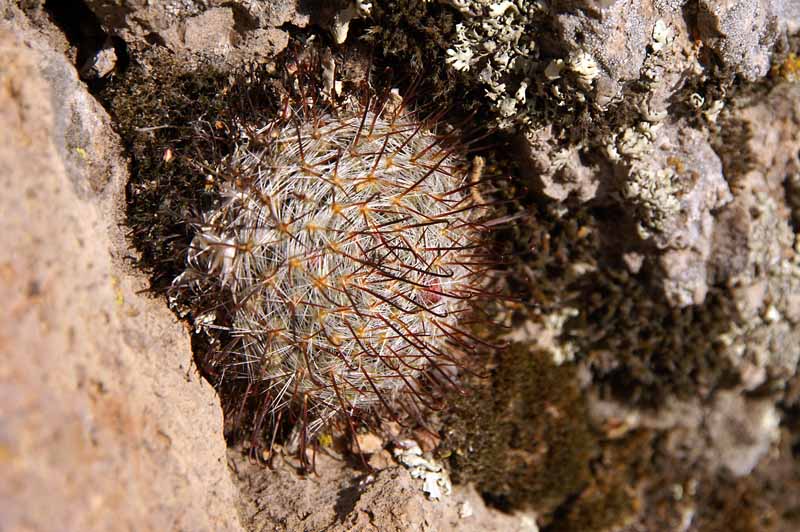 Mammillaria jaliscana aff. 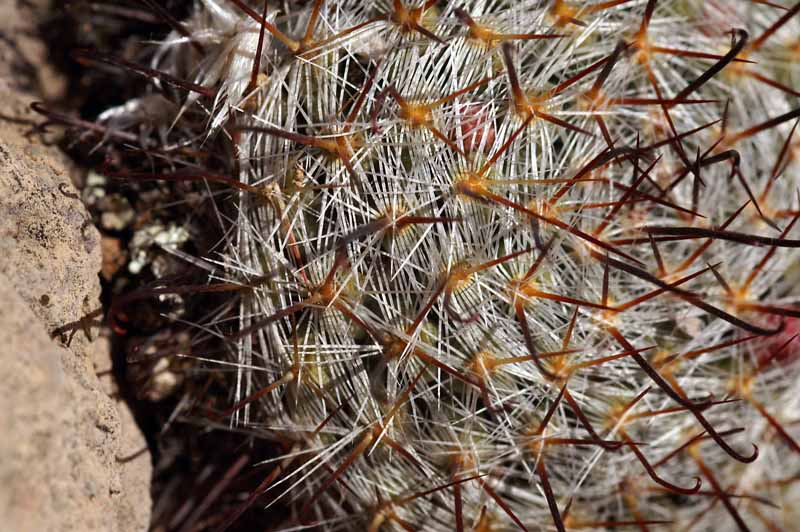 Mammillaria japiscana aff. And here as well was the prize species on this site:  Mammillaria perezdelarosae 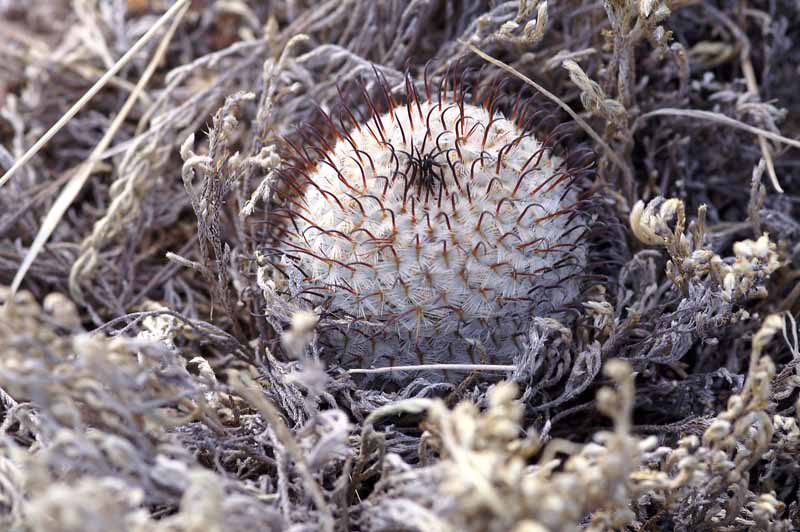 Mammillaria perezdelarosae 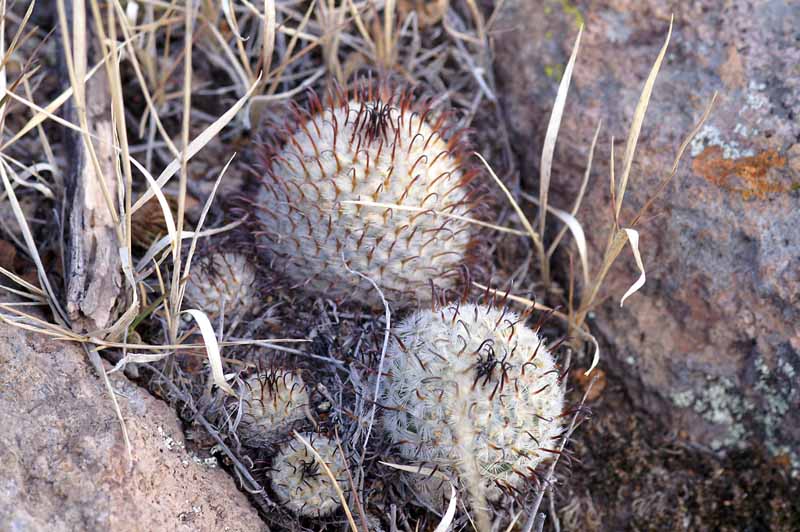 Mammillaria perezdelarosae 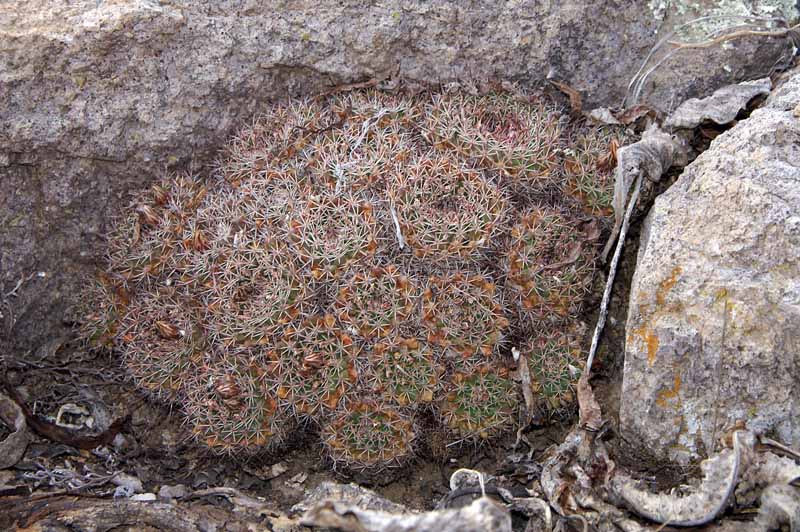 And on a rock, this multiheaded plant - at first we wondered if it might be M. formosa, but I think not, just an unusual offsetting form of Mammillaria heyderi ssp gummifera 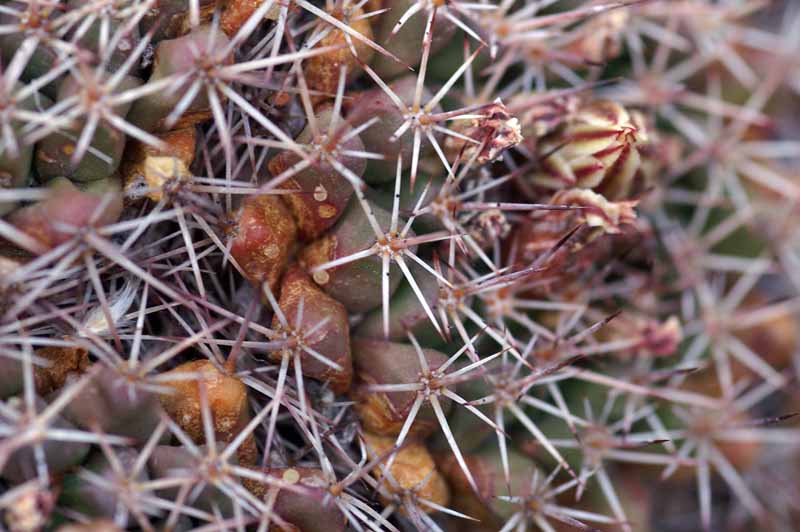 Close up of the spination of this plant
_________________
Chris43, moderator
| |
|   | | Guest
Guest
 |  Subject: Re: Photos from my Mexico trip - first of many parts! Subject: Re: Photos from my Mexico trip - first of many parts!  Wed May 19, 2010 4:13 pm Wed May 19, 2010 4:13 pm | |
| You left me with my mouth watering for a taste of Mexico, and my eyes bulging. Well done Chris. Looking forward to see more pictures and thanks for sharing.  |
|   | | Chris43
Moderator


Number of posts : 1872
Age : 81
Location : Chinnor, UK
Registration date : 2008-07-16
 |  Subject: Plenty more... Subject: Plenty more...  Wed May 19, 2010 5:04 pm Wed May 19, 2010 5:04 pm | |
| Hi Amante,
It was simply wonderful - I have a lot more to share, but will do so in a second thread, else this one will get too long. Look for more in a couple of days, hopefully!
The only downside was that in April, there were not many seed pods on the plants. But a few....
_________________
Chris43, moderator
| |
|   | | Guest
Guest
 |  Subject: Re: Photos from my Mexico trip - first of many parts! Subject: Re: Photos from my Mexico trip - first of many parts!  Wed May 19, 2010 5:23 pm Wed May 19, 2010 5:23 pm | |
| Very nice Chris! Thanks for showing.
Wiebe |
|   | | maurillio
Number of posts : 2988
Age : 70
Location : Modena - Italia
Registration date : 2009-12-20
 |  Subject: Re: Photos from my Mexico trip - first of many parts! Subject: Re: Photos from my Mexico trip - first of many parts!  Wed May 19, 2010 7:24 pm Wed May 19, 2010 7:24 pm | |
| meravigliose sensazioni.....
grazie. | |
|   | | Guest
Guest
 |  Subject: Re: Photos from my Mexico trip - first of many parts! Subject: Re: Photos from my Mexico trip - first of many parts!  Wed May 26, 2010 4:45 am Wed May 26, 2010 4:45 am | |
| Wow! I just found your pics! I WANT I WANT! That's all I kept saying as I saw each plant!  I have always LOVED M. perezdelarosae, But after seeing them in Habitat... They're gorgeous! I'll bet that M. uncinata was increadible with all those spent flowers in bloom! Shame you missed them. I'm going to look at the next two posts.. .I'm sure I'll be posting again! Thanks Chris |
|   | | Chris43
Moderator


Number of posts : 1872
Age : 81
Location : Chinnor, UK
Registration date : 2008-07-16
 |  Subject: Additional Photo from the first site and a big question?? Subject: Additional Photo from the first site and a big question??  Sat Jul 24, 2010 12:29 pm Sat Jul 24, 2010 12:29 pm | |
| Below, you'll see another photo which I took at the first site: 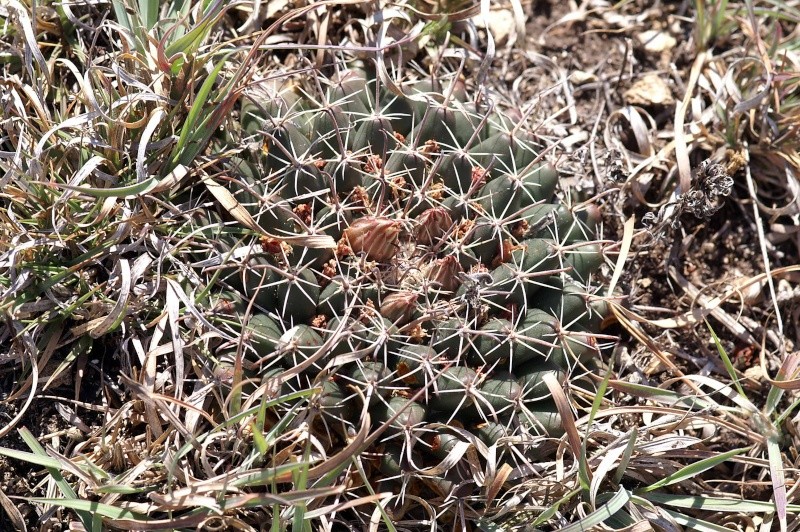 If you look at this one, which I only did recently in sorting out my photos, you'll notice that it has hooked spines, so immediately one thinks of M. uncinata. Why I didn't spot this at the time, I have no idea, but as it was the day after we arrived, I shall blame jet lag!! Faced with what seemed ot be an unusal situation, I checked the reported locations of M. heyderi ssp gummifera and found that there were no reports from the state of Guanajuato. Hmmm.....a real problem then. So some questions, therefore.....what is the straight spined plants from this first site and what are the others that I have called gummifera? Is there a straight spined form of M. uncinata? Where does M. lloydii (also not known from Guanajuato) fit into the equation? Is wagneriana relevant here? I have asked a couple of eminent botanists and collectors to comment on this, but if anyone here has insights into this question, I'd be very glad to hear.
_________________
Chris43, moderator
| |
|   | | woltertenhoeve
Number of posts : 343
Registration date : 2009-10-01
 |  Subject: Re: Photos from my Mexico trip - first of many parts! Subject: Re: Photos from my Mexico trip - first of many parts!  Sun Aug 01, 2010 1:59 pm Sun Aug 01, 2010 1:59 pm | |
| Hi Chris, I have attached some photos. This absolutely won't help you, but it shows that I face the same ID problems. The first photo of a difficult to ID Mamm is from SW of Pozos in Guanajuato (at a M. albiflora location). In my field list I have attached the name M. formosa/pseudocrucigera to it (WTH 369), but I am completely uncertain about it. From nearby Michel Lacoste reports ML 334, identified by him as M. sempervivi. The second and third photo are from a little southwest of Fresnillo, Zacatecas. I have attached the names M. gummifera (WTH 717; only a few plants) and M. wagneriana (WTH 715, plant on the right side of second photo; the big plant of the third photo; many plants) to them, but is that correct? M. uncinata also grows at that location. About 20 km east of Sombrerete, I found small plants (about 5 cm diameter) which I classified as M. heyderi aff. (WTH 392), and big plants (up to 20 cm diameter) which I classified as M. gummifera. I now wonder if the small plants could have been a juvenile form of the big plants. Wolter. 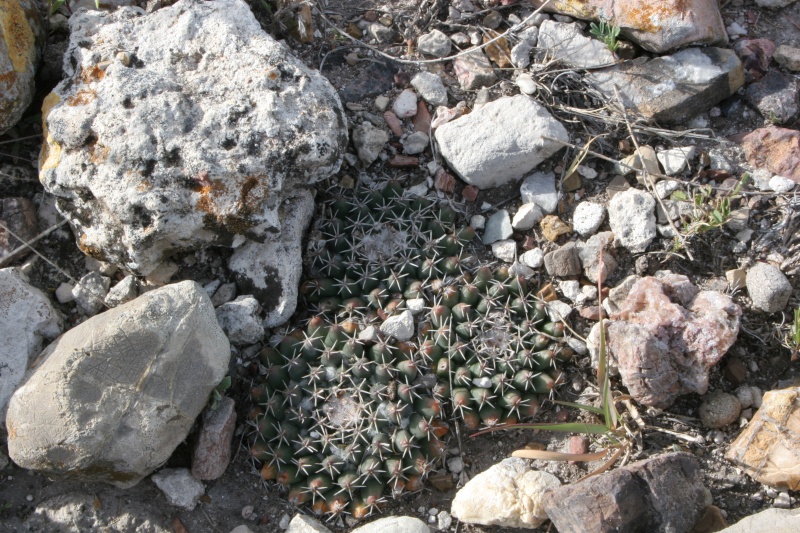 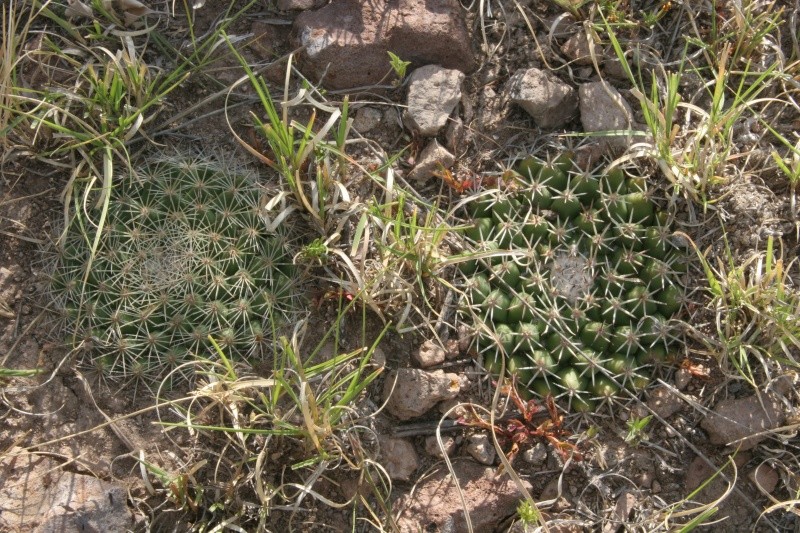 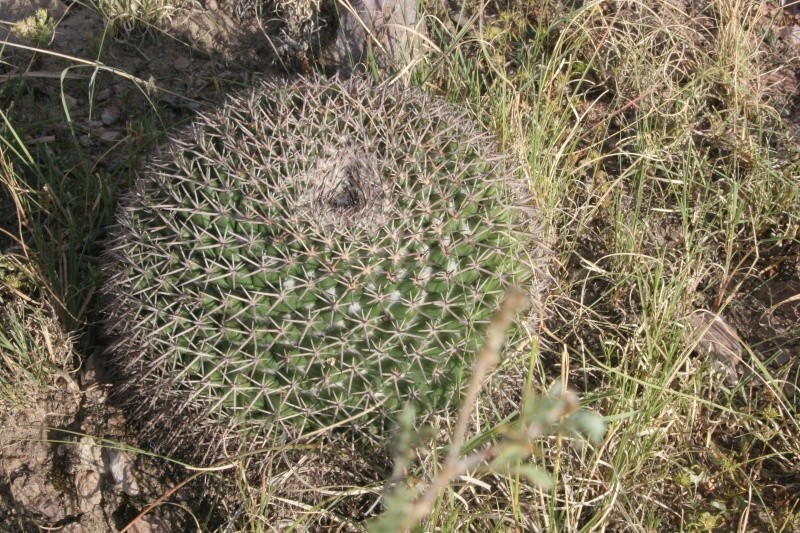 | |
|   | | Sponsored content
 |  Subject: Re: Photos from my Mexico trip - first of many parts! Subject: Re: Photos from my Mexico trip - first of many parts!  | |
| |
|   | | | | Photos from my Mexico trip - first of many parts! |  |
|
Similar topics |  |
|
| | Permissions in this forum: | You cannot reply to topics in this forum
| |
| |
| |
|
